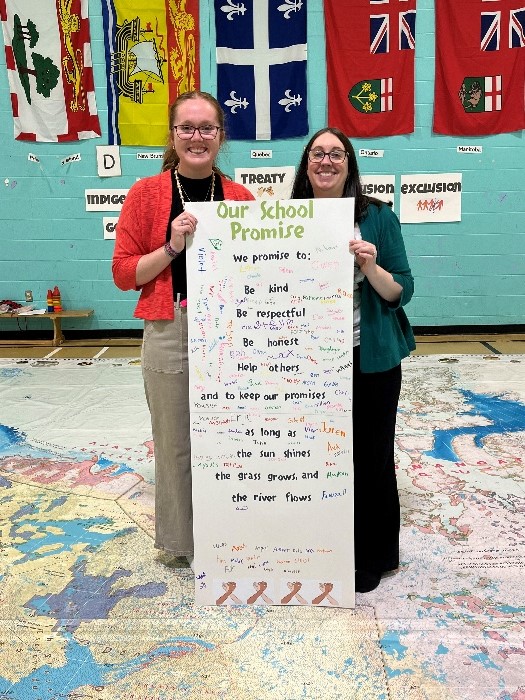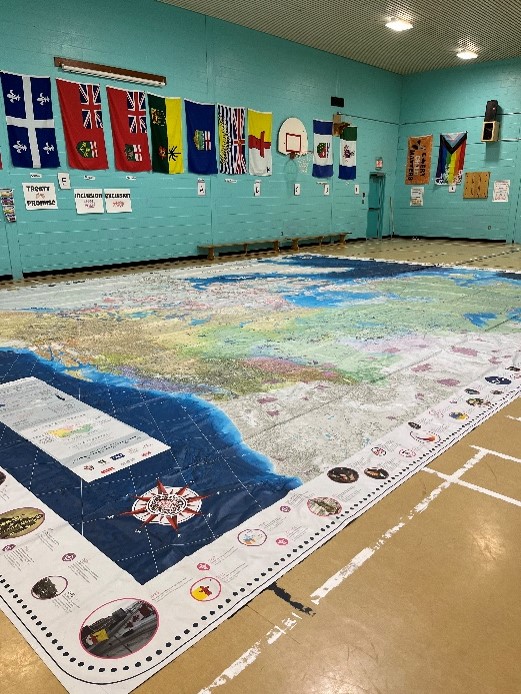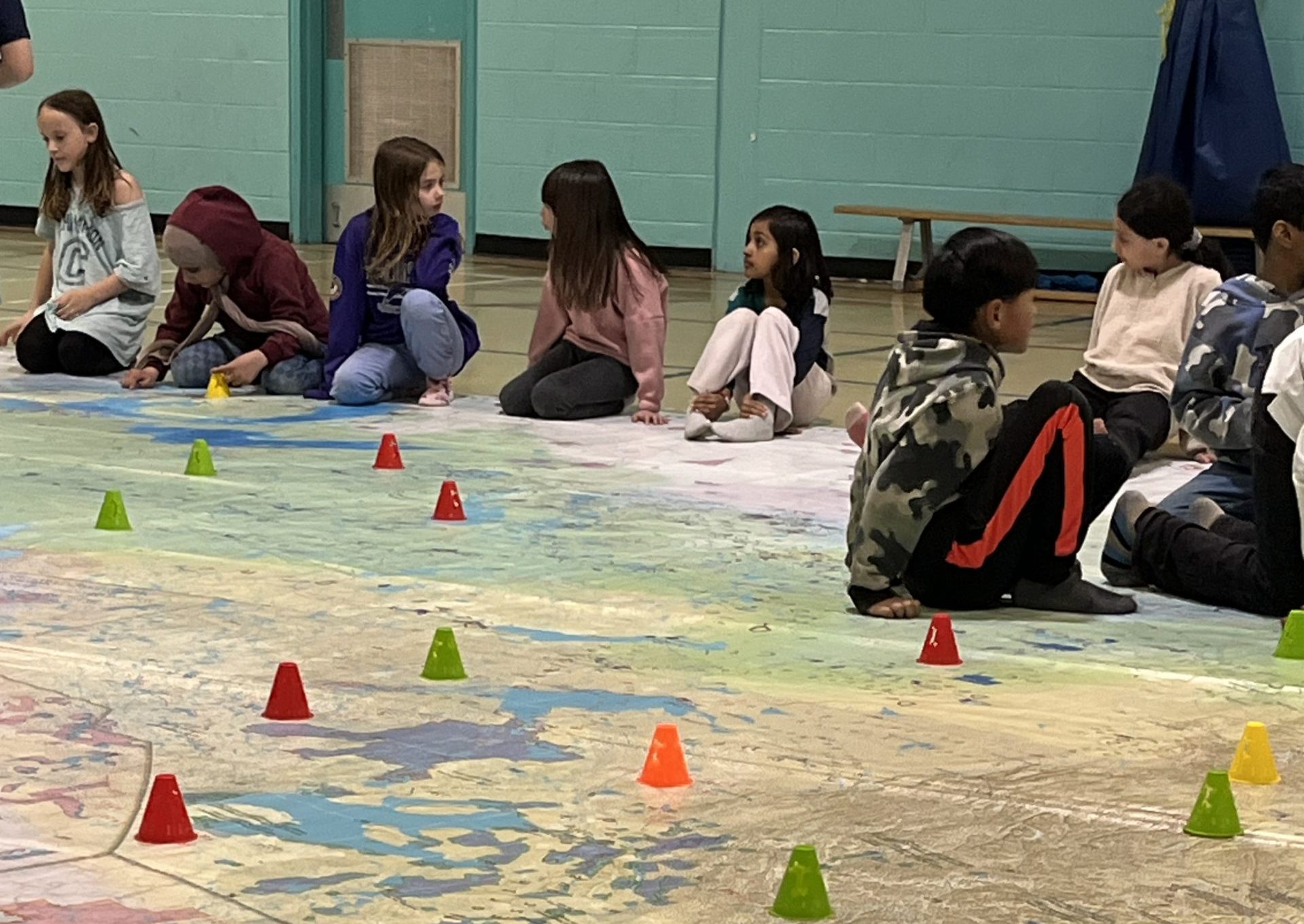History is complicated. And the teaching of history can be fraught with culture-war issues, especially in our current politically charged climate.

But Anglophone School District West’s teachers are skilled at blocking out the “noise” and delivering the facts students need to become informed citizens in their communities, the country, and the world.
Liverpool Street Elementary School teachers Sarah Kelly and Katie Hoedl exemplified this skill on Thursday and Friday, May 8 and 9, when they taught lessons to the school’s Grade 2-5 classes about the treaties with Indigenous people that helped form Canada, using a room-sized treaty map that let students physically explore the country’s formation via treaties.
“Treaty and Wabanaki education, is part of the new holistic curriculum for all students,” Hoedl said. “Using the map is an engaging and hands-on way to introduce the idea of treaties in Canada to a younger audience.”
The map, provided by Canadian Geographic Education, was set up on the gym floor. Students were then asked to place pylons on the map indicating where historical treaties were made. Lessons also covered how treaties are made—and what happens when those treaties are broken—using an act children are very familiar with: the pinky swear.
“We represented the Indigenous people with one pinky, and the Canadian government with the other, said Kelly. “We showed how linking the two pinky fingers forms a strong bond, a promise.”
Of course, if one pinky lets go, that once-strong bond no longer exists.

Students also held a braided rope, which comes with the map, and did the wave. The wave signified promises kept. However, when two students were asked to let go of the rope, their classmates saw that the wave was not as successful.
“Through this visual and tangible demonstration, students could see how broken promises lead to broken communication and exclusion, as many students could not continue ‘the wave’ once the connection was cut,” she said. “Finally, we picked up the rope again to show how we can start to make up for broken promises and introduced this as the beginning of Reconciliation.”
Students got the message.
Grade 2 student Gavin Clarke said, “I learned not to break promises because then the other person could get sad or angry.”
“I learned not to break promises because then the other person could get sad or angry.”
Liverpool Street Elementary School Grade 2 Student Gavin Clarke
“I liked it because it was active learning and I really enjoyed walking all over the map,” said Eden Watters, a Grade 5 student. “I could explore and learn at the same time.”
The exercise showed the direct link between the broken treaties of the past and modern-day efforts to ameliorate the effects of those broken treaties.
“We hope that the map provided students with a visual representation of Indigenous communities in Canada,” Hoedl said. “On a deeper level, we hope students have some understanding of how the Indigenous communities were treated and why we are working hard to make up for years of exclusion.”

